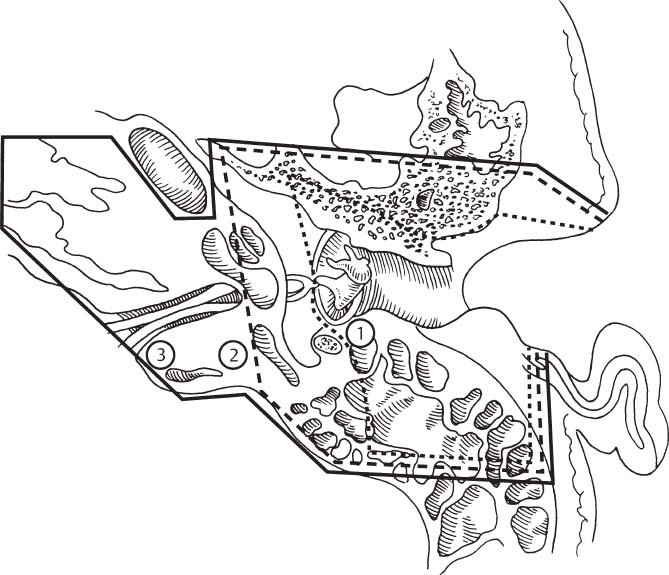32
Temporal Bone Resection
Elizabeth H. Toh Barry E. Hirsch
Temporal bone resection refers to a group of extirpative surgical procedures for resection of malignant disease affecting the external auditory canal (EAC) and temporal bone.
- Unless the tumor is well isolated within the EAC, combined therapy with complete tumor removal and postoperative radiation is thought to provide the best locoregional tumor control.
- The issue of whether piecemeal resection compared with en bloc resection compromises survival rates is unclear.
- Gross tumor removal with microscopic disease-free margins will favor improved locoregional disease control. This is best achieved at the primary surgical resection.
- Tumor mapping for staging and surgical planning is best performed using highresolution computed tomography (CT) imaging of the temporal bone. Magnetic resonance imaging (MRI) is useful in delineating intracranial and infratemporal fossa extension of tumor. Preoperative angiography and balloon occlusion testing with xenon/CT are indicated if resection of the involved internal carotid artery, with or without reconstruction, is being considered. The need for a metastatic workup is determined by tumor pathology and the likelihood of locoregional and systemic spread of disease.
- A preoperative audiogram should be obtained to define hearing in both ears even though the extent of surgery is defined by the extent of tumor rather than residual hearing function.
- The need for neurosurgical and/or plastic reconstructive expertise should be anticipated preoperatively.
- Three broad categories of temporal bone resection have been defined:
- Lateral Indicated for malignancies limited to the EAC without tympanic membrane violation. If tumor is limited to the lateral EAC, a resection of the EAC sleeve, lateral to the tympanic membrane, may be performed.
- Subtotal Indicated for tumors involving the middle ear and mastoid cavity. The medial extent of resection incorporates the otic capsule and is dictated by the areas of tumor infiltration.
- Total Indicated for tumors eroding the cochlea, petrous apex, and carotid canal.
- The limits of each of these procedures are illustrated in Fig. 32–1.




